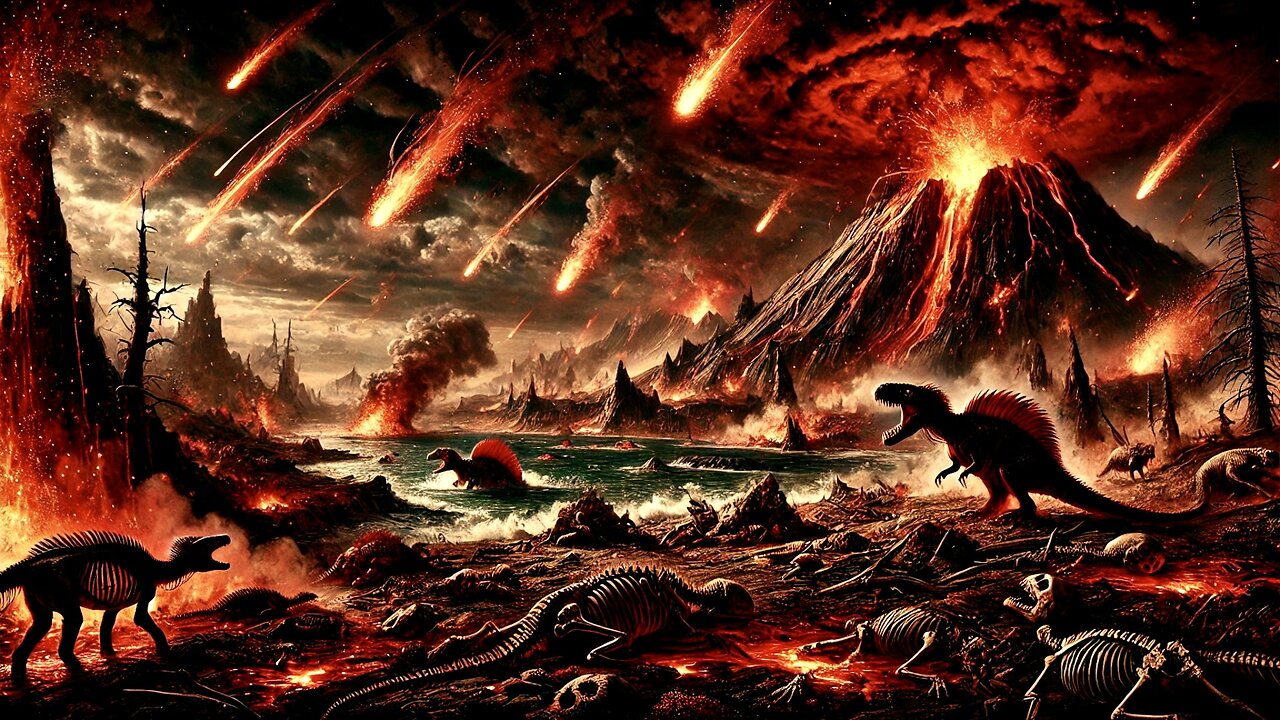Premium Only Content

Earth's Greatest Mass Extinction - Full Documentary
The Permian-Triassic extinction event, also known as the "Great Dying", was the largest mass extinction in Earth's history. It occurred about 252 million years ago. So, what exactly happened? A series of factors caused the extinction, including massive volcanic eruptions, global warming, and ocean acidification. The extinction wiped out more than 95% of all species, including most vertebrates. The extinction marked the end of the Permian period and the beginning of the Age of Dinosaurs
What caused the extinction?
Volcanic eruptions:
Released carbon dioxide into the atmosphere, which caused global warming and ocean acidification
Ocean acidification:
Made the oceans toxic and fatal to much marine life
Lack of oxygen:
Caused large-scale deoxygenation of the oceans
Metal and sulfide poisoning:
Caused widespread poisoning of the oceans
What did the extinction lead to?
A revolution in ecosystems, with birds and mammals becoming dominant over amphibians and reptiles.
Approximately 251.9 million years ago, the Permian–Triassic (P–T, P–Tr) extinction event (PTME; also known as the Late Permian extinction event, the Latest Permian extinction event, the End-Permian extinction event, and colloquially as the Great Dying) forms the boundary between the Permian and Triassic geologic periods, and with them the Paleozoic and Mesozoic eras It is Earth's most severe known extinction event, with the extinction of 57% of biological families, 83% of genera, 81% of marine species and 70% of terrestrial vertebrate species. It is also the greatest known mass extinction of insects. It is the greatest of the "Big Five" mass extinctions of the Phanerozoic. There is evidence for one to three distinct pulses, or phases, of extinction.
The scientific consensus is that the main cause of the extinction was the flood basalt volcanic eruptions that created the Siberian Traps, which released sulfur dioxide and carbon dioxide, resulting in euxinia (oxygen-starved, sulfurous oceans), elevated global temperatures, and acidified oceans. The level of atmospheric carbon dioxide rose from around 400 ppm to 2,500 ppm with approximately 3,900 to 12,000 gigatonnes of carbon being added to the ocean-atmosphere system during this period. Several other contributing factors have been proposed, including the emission of carbon dioxide from the burning of oil and coal deposits ignited by the eruptions; emissions of methane from the gasification of methane clathrates; emissions of methane by novel methanogenic microorganisms nourished by minerals dispersed in the eruptions; longer and more intense El Niño events; and an extraterrestrial impact which created the Araguainha crater and caused seismic release of methane and the destruction of the ozone layer with increased exposure to solar radiation.
#history #science #ancient
-
 3:36
3:36
Seeker Land
1 month agoCreate Your AI Girlfriend ~ Free Account ~ Encrypted Privacy ~ Link In Description ~ Candy AI
891 -
 1:31:56
1:31:56
Michael Franzese
16 hours agoWill NBA do anything about their Gambling Problems?
97.5K19 -
 57:26
57:26
X22 Report
5 hours agoMr & Mrs X - The Food Industry Is Trying To Pull A Fast One On RFK Jr (MAHA), This Will Fail - EP 14
70.2K40 -
 2:01:08
2:01:08
LFA TV
1 day agoTHE RUMBLE RUNDOWN LIVE @9AM EST
129K11 -
 1:28:14
1:28:14
On Call with Dr. Mary Talley Bowden
3 hours agoI came for my wife.
9.33K6 -
 1:06:36
1:06:36
Wendy Bell Radio
8 hours agoPet Talk With The Pet Doc
44.4K24 -
 30:58
30:58
SouthernbelleReacts
2 days ago $6.77 earnedWe Didn’t Expect That Ending… ‘Welcome to Derry’ S1 E1 Reaction
24.4K8 -
 13:51
13:51
True Crime | Unsolved Cases | Mysterious Stories
5 days ago $16.11 earned7 Real Life Heroes Caught on Camera (Remastered Audio)
40.7K10 -
 LIVE
LIVE
Total Horse Channel
14 hours ago2025 IRCHA Derby & Horse Show - November 1st
142 watching -
 4:19
4:19
PistonPop-TV
6 days ago $5.78 earnedThe 4E-FTE: Toyota’s Smallest Turbo Monster
36.6K